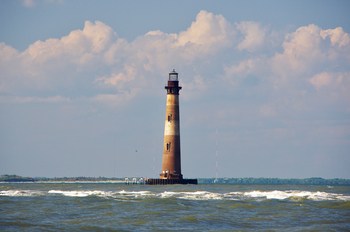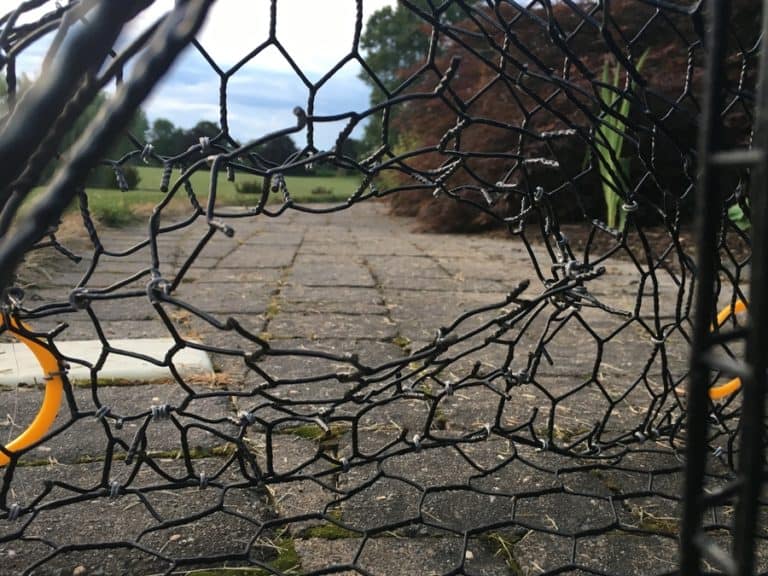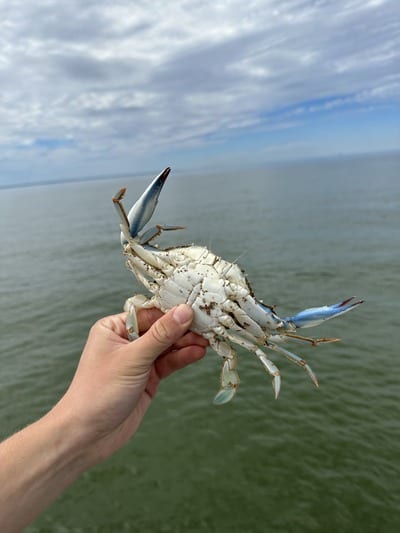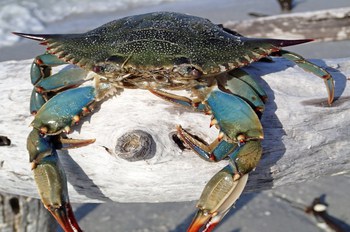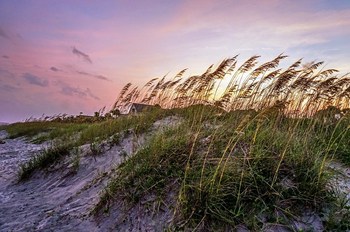The Best Time to Catch Blue & Stone Crabs in South Carolina
Planning my trip to South Carolina, I wanted to know the perfect time for me and my family to go crabbing. There wasn’t a direct guide online on the subject, so I figured I would make one myself.
After doing some research, I recommend going crabbing an hour to two after low tide when the tide is coming in, all the way through two hours after high tide. This is the perfect time to go crabbing in South Carolina.
Let’s look into the question in a bit more detail along with some examples.
The Best Time to Catch Crabs
Catching a blue crab can be very easy if you know what you’re doing. Anyone can learn how to use ring nets, hand lines, or crab pots. However, it takes lots of practice and prior knowledge to know when and how to set your traps perfectly.
Let’s start with the basics, you need to know what type of crab you’re c
Blue crabs, if you didn’t know already, have little fins that work as their back two legs to help them paddle through the water. Unlike dungeness and stone crabs, blue crabs don’t stay on the water bed to search for food. Instead they, in a sense, go with the flow (pun intended) and let the current push them along as they paddle.
They rely on their sense of smell to find their dinner. If a blue crab paddling along with the current catches a whiff of your bait, it’ll swim towards your trap and eventually end up on your dinner plate.
To make that happen, your job is to line up your trap with the correct time and the best spot. I’m going to assume you picked a crabbing spot along the shoreline, where most piers are.
A trick is to time the currents for the perfect time to go crabbing. I recommend going crabbing an hour to two after low tide, when the tide is coming in, all the way through two hours after high tide. This is the perfect time to go crabbing in South Carolina.
You can also find luck crabbing at exactly low tide, or exactly high tide. Also, the perfect time between high and low tide called slack tide, when the water is completely unstressed and not moving. This gives the crabs no current to fight to find your trap.
If the current is a little rough, this may be more difficult. Let’s say you’re using a ring net or hand line. You need to position your trap so that the current can’t push your trap underneath the pier, and inevitably get it caught on something and bye bye crab trap.
Set the trap so that it’s on the side of the pier that the current is flowing towards, which will bring lots of blue crabs towards your ring net or hand line.
If you’re using a crab pot, the general idea still applies. Just be sure to make the doors of your trap face the direction the current is coming from. You want to make the crab’s task of coming into your trap almost thoughtless.
Stone crabs, unlike blue crabs, only have eight normal-sized legs along with two giant claws. They don’t have fins to help them glide through the water like blue crabs, so you shouldn’t have to worry too much about the tides to catch these creatures. They’re a little more rare in South Carolina compared to Florida or Georgia, so you shouldn’t worry about them. If you do manage to catch a stone crab, check with South Carolina’s DNR website on stone crab regulations.
Reading Tide Charts
Now you know the perfect time to go crabbing, let’s put it into an example.
Here’s the tides for the week of February 9th to February 17th. It’s a bit cold out to go crabbing, I don’t recommend doing so until late March or early April when the waters are warmer. Warmer waters equals more crab action.
It may be hard to see, but if you look closely on today (the 10th) on the chart, you’ll see that low tide is at 5:08am, and high tide is at 1:49pm. You should do fine crabbing if you went out in the afternoon, but you would do much better if you waited until a day when the tide’s coming in most of the day instead of going out.
For example, on Saturday the 16th of February, low tide is at 11:16am, and high tide is at 5:14pm. This would make for a perfect afternoon of crabbing on the water at prime time, when the tide is coming in.
Again, be sure to position your traps so that the current is coming towards your trap’s doors.
The Best Weather
One of the best few months to go crabbing in South Carolina is from April to May, so let’s describe a perfect April-May day for a crabbing trip.
The average humidity in South Carolina around May is 70%, but let’s hope for a cool, 45% humidity day in the mid 70’s (fahrenheit). You might want some cloud cover, but a little sun would never hurt anyone. Lastly, rain is not ideal but a little drizzle scares away competing crabbers. April is one of South Carolina’s driest months so I wouldn’t worry (Source).
Check your weather app or the local radar, if you see any very windy days or heavy downpours you might want to reschedule your crabbing trip.
Related Questions
I found a sea of questions regarding South Carolina crabbing while researching the subject, let’s cover a few.
When is South Carolina’s Crabbing Season?
South Carolina’s crabbing season typically runs from Oct 1st through May 15th. However these dates are an estimate, and are determined based on crab populations and other factors. For the most accurate dates, call South Carolina’s Department of Natural Resources at 843-953-9300.
Can I go crabbing at night?
If you look at a tide chart, it’s easy to think, “Man, If I go crabbing at 3 am I could get started at slack tide and catch a ton of blue crabs.” You’re right, you probably would. However, it’s against South Carolina’s crabbing rules and regulations. During the season (Oct 1 – May 15), you are allowed to go crabbing every day starting at ½ an hour before sunrise until ½ an hour after sunset.

